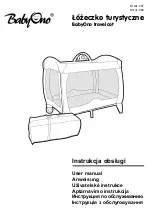
10
MEDEA Programming Manual
Standards and certifications
The EN 50131-1 standard
The EN 50131-1 standard calls for the installation of a Grade 4 intruder alarm system, based on the level
of risk determined in function of the type of environments, of the value of the goods to be protected, and
the typical intruder expected.
Grade 1
Low risk
It is expected that the intruders have little knowledge of intrusion alarm systems
and have a limited range of tools that can be easily obtained.
It is indicated for premises with contents of low value.
The system is simple and equipped with external and/or internal acoustic alarms,
optical warnings, and eventually a telephonic communicator to vocal messages
to other people.
Grade 2
Average-low risk
It is expected that the intruders have limited knowledge of intruder alarm systems
and use some tools and portable instruments (for example, a multimeter).
It is the minimum level that can be recognised by insurance companies.
It involves mostly residential and commercial premises of low value.
The system can be connected with a Security Service.
Grade 3
Average-high risk
It is expected that the intruders have knowledge of intruder alarm systems and
have a full range of tools and portable electronic equipment.
It is indicated for commercial and industrial premises, as well as for residential
premises with a high value.
The system is usually connected with a Security Service.
Grade 4
High risk
To be used when security has the priority over all other factors. It is expected
that the intruders have the skills and resources to plan a detailed intrusion and
have a complete set of tools available, including the means for substituting
components of an intruder alarm system.
This is indicated for particularly sensitive premises, for example, banks.
Table 1 - EN 50131-1 safety grades
IMPORTANT!
The overall grade of an intruder alarm system is the one of its lowest grade
component.
EN 50131-1 requires that intrusion alarm system components to be suitable for use in one of the following
environmental classes:
Class I
Internal
Environmental influences normally present in closed environments, when the
temperature is well-controlled (ex: in a residential or commercial property).
NOTE
: The environment should not be subject to condensation and the
temperature should vary between +5°C and +40°C with an average relative
humidity of about 75%.
Class II
Indoor (general)
Environmental influences normally present in closed environments, when the
temperature has not been controlled (ex: in corridors, other spaces or stairways
where condensation may form on windows and in unheated areas used as a
deposit or in warehouses where heating is intermittent).
NOTE
: The environment should not be subject to condensation and the
temperature should vary between -10°C and +40°C with an average relative
humidity of about 75%.













































